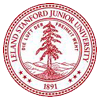Rationalization of Miracles

"To qualify for Catholic sainthood during the l7th century, one did not have to die a martyr. As Paolo Parigi's The Rationalization of Miracles explains, a candidate for sainthood needed supporters capable of navigating the Catholic Church's bureaucratic rules. During the nearly 400-year-long span when these rules were in effect, mobilized proponents attested to their candidate's virtues and miracles and financed trials before a special commission, the Congregatio Sacrorum Rituum (Congregation of the Sacred Rites). Through these rules, the Catholic Church maintained its position during uncertain times by coordinating actors with mutual interests in routinizing the charisma of particular leaders."
"Extending Weber's rationalization concept, Parigi argues that by rationalizing miracles, the Catholic Church gained legitimacy while enabling local actors' meaning-making efforts. Using social movement terminology,
Parigi contends that the Catholic Church's centralization of the designation of sainthood also integrated acolytes, or supporters whom he likens to activists, who organized around attempts to institutionalize their leaders' charisma,
which Parigi considers mobilizing events. By establishing rules that regulated the "social form" (i.e., coordinating supporters across social classes) rather than the "content" or type of miracles (p. 19),
the Catholic Church simultaneously positioned itself as the arbitrator between "true" and "false" miracles and secured the allegiance of acolytes who sought to preserve their positions under canonized leaders."
(from Katherine Chen, Review of The Rationalization of Miracles, AJS)




